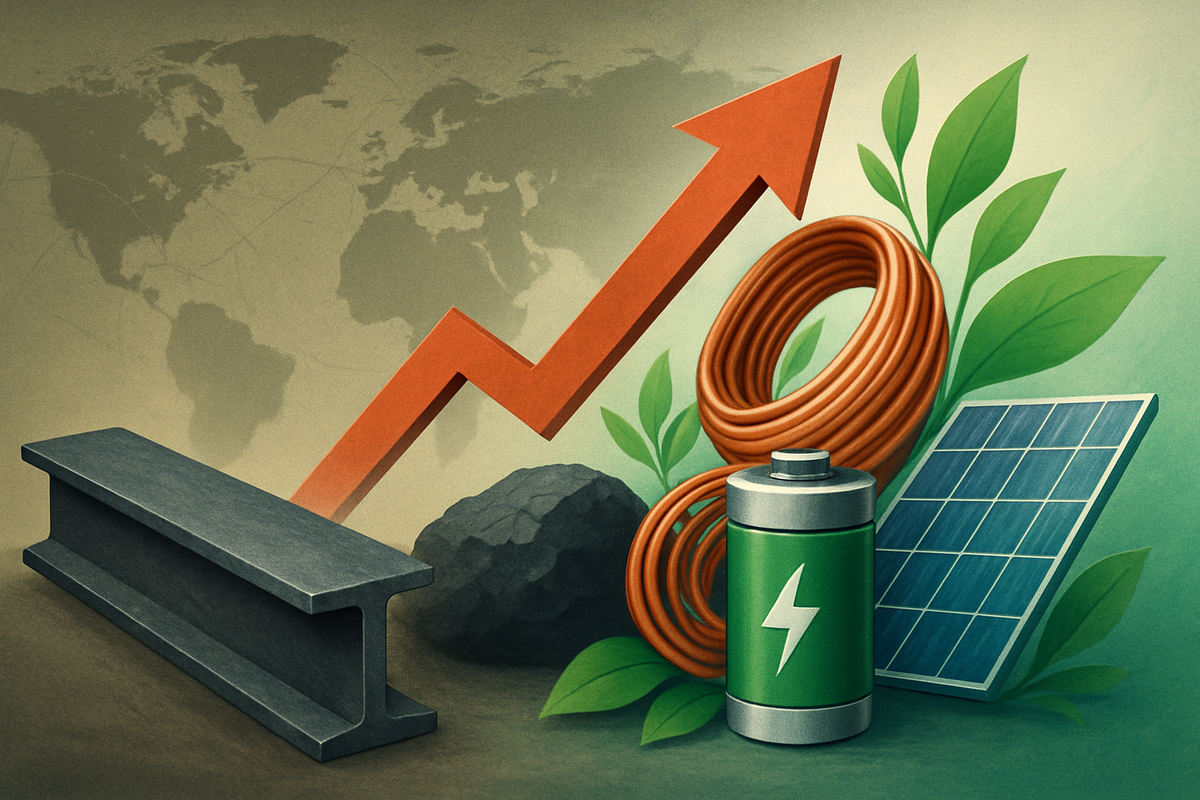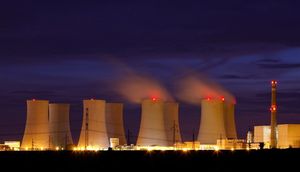
Shanghai, China – November 10, 2025 – The persistent concerns surrounding China's demand for commodities continue to reverberate across global financial markets, signaling a profound and structural shift in the world's second-largest economy. While recent data offers glimmers of a nascent recovery in some sectors, a cautious outlook prevails, driven by a prolonged real estate crisis, a deliberate pivot towards domestic consumption and high-tech manufacturing, and complex geopolitical dynamics. This transformation is not merely a cyclical downturn but a fundamental re-evaluation of China's role as the world's primary raw material consumer, with immediate and far-reaching implications for global commodity discussions and pricing strategies.
The immediate impact is a bifurcated commodity market: traditional industrial metals face sustained headwinds, while materials crucial for the green energy transition are poised for growth. This divergence forces market participants worldwide to recalibrate their strategies, grapple with increased volatility, and navigate an increasingly complex interplay of economic policy, trade tensions, and environmental imperatives.
The Dragon's Shifting Appetite: A Detailed Look at Demand Concerns
China's current commodity demand landscape is a nuanced picture of underlying economic challenges and strategic reorientation. The nation, historically an insatiable consumer of raw materials, is navigating a period of slower growth, projected between 4.1% and 4.5% for 2025. This deceleration is accompanied by persistent deflationary pressures, subdued consumer activity, and a challenging housing market, which together exert significant influence on global commodity pricing.
At the heart of the concern is the prolonged crisis in its real estate sector, a saga that began with the "three red lines" policy in 2020. This policy, designed to deleverage developers, exposed systemic risks that have since crippled the sector. New home sales in October 2025 were down 12% year-on-year, and the inventory of unsold homes reached a record high of 421.58 million square meters by March 2025. Given that China's construction and real estate sectors account for 40-45% of its total steel demand, this contraction directly translates into weakened demand for commodities like iron ore, steel, and copper. Iron ore prices, for instance, tumbled to multi-month lows in early November 2025, with surging port inventories (138.44 million tons as of November 7, 2025) highlighting a significant supply-demand imbalance. Chinese steel producers are implementing widespread production cuts due to margin compression and operational losses.
Energy commodity demand presents a mixed bag. China's crude oil demand growth is expected to remain sluggish (2% in 2025), influenced by slower economic growth and the accelerating adoption of electric vehicles (EVs). Conversely, natural gas consumption, particularly for Liquefied Natural Gas (LNG), saw impressive growth of 10% year-on-year in the first three quarters of 2024, with high single-digit growth anticipated for 2025, supporting North American gas benchmarks. In the agricultural sector, trade disputes and efforts towards self-sufficiency have led to shifts in sourcing, with China imposing import levies on US soybeans and Canadian rapeseed meal in March 2025, while increasing reliance on supplies from Brazil and Argentina.
The timeline leading to this moment reveals a gradual but consistent reordering of priorities. After the initial property crisis in 2021-2022, China's government began implementing targeted stimulus measures from late 2024, focusing on housing, SMEs, consumer spending, and the green transition. October 2025 saw China's Consumer Price Index (CPI) return to positive territory at 0.2% year-on-year, breaking a two-month deflationary streak, with core inflation reaching a 20-month high of 1.2%. This suggests some firming of underlying domestic demand. However, new export orders fell sharply into contraction territory in October, dampening overall output growth despite a manufacturing PMI of 50.6. Recent diplomatic gestures, such as China's one-year suspension of port fees on US-linked vessels and removal of tariffs on certain US optical fiber imports in November 2025, are interpreted as attempts to ease trade tensions and provided a modest boost to risk appetite in commodity markets.
Key players and stakeholders involved in this evolving narrative include the Chinese Government and Institutions, particularly the People's Bank of China (PBOC) and the Ministry of Commerce, which are orchestrating fiscal and monetary stimulus and trade policies. Chinese Property Developers like Evergrande and Country Garden, whose financial struggles initiated much of the domestic slowdown, remain central. Global Mining Companies such as BHP (ASX: BHP), Rio Tinto (ASX: RIO), and Fortescue Metals Group (ASX: FMG) are highly exposed to China's demand for industrial metals. OPEC+ decisions on oil production quotas are significantly influenced by Chinese oil consumption forecasts. Agricultural Exporters from the US, Brazil, Argentina, and Canada face direct impacts from China's changing import policies. The US Government, under President-elect Trump, continues to engage in trade disputes, shaping global trade friction. Initial market reactions have been characterized by price volatility, particularly sharp declines in iron ore, and a cautious sentiment, with investors advised to diversify away from China-dependent sectors.
Winners and Losers in China's Economic Rebalancing Act
China's structural economic transformation is creating a distinct divergence in fortunes for public companies across the globe. Companies aligned with China's past growth model face significant headwinds, while those catering to its new strategic priorities—domestic consumption, green technologies, and diversified sourcing—may find new opportunities.
Companies Likely to Lose:
- Iron Ore Miners: Companies like Fortescue Metals Group (ASX: FMG), Rio Tinto (ASX: RIO), BHP (ASX: BHP), and Vale (NYSE: VALE) are particularly vulnerable. With China's real estate market contracting and steel production expected to decline, the demand for iron ore remains sluggish. Analysts predict iron ore prices could fall to between $75 and $120 per ton in 2025, impacting revenue and profit margins for these giants. The push for de-dollarization in iron ore settlements further complicates matters for Western miners.
- Crude Oil Producers: Major international oil companies face headwinds as China's oil demand growth slows to a projected 2% in 2025, down from a 5% average over the past decade. This is driven by decelerating economic growth and the rapid adoption of electric vehicles, which could see China's oil demand peak by 2027. A global oil market surplus is anticipated in 2025, with Brent crude prices potentially hovering around $65 per barrel, weighing on profitability.
- Commodity Chemical Manufacturers: The Chinese commodity chemicals industry is battling structural supply gluts and a shaky demand recovery. Excess capacity has led to significant price drops, creating immense operational pressure for both Chinese and international players focused on generic chemical products.
- Some US Agricultural Exporters: Companies like CHS and Louis Dreyfus Company Grains Merchandising have experienced import suspensions or reduced demand from China for commodities like soybeans due to trade tensions and tariffs. While some suspensions have been lifted, the volatility and uncertainty persist, compelling China to diversify its agricultural sourcing to countries like Brazil and Argentina.
Companies That Might Win or Be Less Affected:
- Copper and Aluminum Miners: Miners such as Glencore (LSE: GLEN), Anglo American (LSE: AAL), and Freeport-McMoRan (NYSE: FCX) are expected to benefit from China's green transition. Despite some short-term demand fears, analysts anticipate price increases for aluminum and copper in 2025, driven by demand from renewable energy, EVs, solar installations, and grid upgrades. Copper prices are projected to recover to $10,500 per tonne, and aluminum could break $3,000 per tonne.
- Lithium Miners: China remains a pivotal player in the global lithium market, with Chinese companies projected to supply over 65% of the world's processed lithium in 2025. Companies involved in lithium extraction and processing, especially those with ties to the Chinese market, are well-positioned for growth as EV adoption accelerates.
- Natural Gas Producers and LNG Exporters: China's strong demand for natural gas, particularly LNG, is expected to continue with high single-digit growth in 2025, driven by energy security goals and its role as a transitional energy source. Companies with significant LNG export capacity could benefit.
- Gold Miners: Macroeconomic uncertainty, deflationary risks in China, and a broader investor shift towards safe-haven assets have bolstered gold prices. Gold surged to $4,400 per ounce in October 2025, creating robust cash flows for miners with low all-in sustaining costs, such as Newmont (NYSE: NEM).
- Companies in Rare Earth Elements (REEs): China dominates 90% of global rare earth processing. However, geopolitical tensions and export restrictions have highlighted supply chain vulnerabilities. This creates opportunities for non-Chinese REE producers or companies diversifying into REEs, such as Idaho Strategic Resources (NYSE: IDR), to reduce reliance on China.
A Global Reordering: Wider Significance and Historical Echoes
The persistent concerns over China's commodity demand are not merely economic jitters but a reflection of deep-seated structural changes within China's economy and its evolving role in global trade. This transformation is compelling industries worldwide to reconfigure supply chains, pushing for greater resilience and diversification, and prompting governments to enact protectionist measures and strategic alliances.
This event fits into broader industry trends emphasizing supply chain resilience and diversification. Companies are adopting "China+1" strategies to reduce over-reliance on any single country, leading to near-shoring and regionalization efforts. China itself is transitioning from the "world's factory" to a "global supply chain hub," leveraging advancements in logistics and AI. Crucially, China's multi-year pivot towards capital and intermediate goods, especially in green industries, means global manufacturers are increasingly reliant on Chinese inputs in these upstream sectors, making complete decoupling challenging.
The ripple effects are profound. Commodity exporting nations like Australia and Brazil face reduced revenues. Agricultural sectors globally contend with shifting trade flows and price volatility. Mining companies are reassessing expansion plans. Conversely, emerging competitors in critical minerals may find new opportunities as countries seek to reduce reliance on China.
Regulatory and policy implications are significant. Beijing is prioritizing domestic consumption, addressing industrial overcapacity, and promoting technological self-reliance. The US-China trade war continues to escalate, characterized by tariffs and export controls, fostering economic decoupling. Governments are forming strategic alliances, like the US-Australia critical minerals pact, and considering new incentives for domestic production. Monetary policies and currency volatility, particularly a strong US dollar, also impact dollar-denominated commodity prices, further dampening demand from major importers like China.
Historically, this situation draws parallels with China's ascent in the 2000s, which fueled a commodity supercycle, and the US-China trade war (2018 onwards), which already triggered supply chain diversification. The current shift is a more fundamental demand shock, akin to major global demand reorderings. While different in nature, the re-evaluation of fundamental assumptions about consumption and supply chains echoes the 1973 oil crisis in its transformative potential for commodity markets. The long-term impacts will likely include a more fragmented and regionalized global economy, recalibrated commodity prices, and continued geopolitical realignments.
The Road Ahead: Navigating a Bifurcated Commodity Landscape
The next 1-5 years (2025-2030) will be defined by a "bifurcated market" for commodities, driven by China's strategic priorities. While traditional commodity demand faces persistent headwinds, a powerful new engine of demand is emerging from China's ambitious green transition and technological self-reliance goals.
In the short-term (2025-2027), China's 15th Five-Year Plan (2026-2030), emphasizing green technology and electrification, will drive robust demand for "green metals" such as copper, aluminum, nickel, lithium, and cobalt. Massive investments in renewable energy infrastructure and EVs are expected. Traditional commodities like steel and iron ore, however, will remain under pressure from the ongoing property sector adjustment, with steel production expected to fall. Oil demand growth will slow due to EV penetration, potentially leading to declining prices, while natural gas demand remains strong.
The long-term (2028-2030) outlook sees the structural transformation of China's economy cementing sustained demand for green metals. China aims to produce 15-20 million EVs annually by 2030 and significantly expand offshore wind capacity. Recycling and a circular economy will also gain prominence as China seeks to boost resource security. Overall materials demand will remain resilient, but growth for commodities like steel and iron ore will decrease compared to previous years.
Strategic pivots for commodity producers and traders are crucial. Diversification of supply chains away from China is accelerating, though challenging. Focusing on "green metals" and materials essential for renewable energy and EVs will be key. Investing in recycling and circular economy technologies, alongside market diversification towards other emerging markets like India and Southeast Asia, will be vital. Enhanced risk management and commercial diplomacy will also be essential in this volatile environment.
Market opportunities lie primarily in green technology materials, natural gas/LNG, recycling, and emerging market demand. The expansion of AI and digital infrastructure will also drive copper demand. However, challenges include weak demand for traditional materials, escalating geopolitical risks and trade tensions, supply concentration of critical transition commodities, high diversification costs, and China's persistent deflationary environment.
Potential scenarios include a "Green Transformation" Dominance, where China's plan leads to sustained demand for green metals, creating a two-speed commodity market. An Extended Economic Headwinds scenario could see prolonged moderate growth and deflationary pressures. Fragmented Global Supply Chains may emerge due to escalating protectionism, leading to new regional manufacturing hubs. Finally, Heightened Volatility and Disruption could result from unpredictable geopolitical events and supply disruptions, demanding greater agility from market participants.
A New Equilibrium: Wrapping Up China's Commodity Influence
The persistent concerns over China's commodity demand, as of November 10, 2025, underscore a fundamental reshaping of the global commodity landscape. The era of China's insatiable, volume-driven demand for all raw materials, which characterized the early 21st century, is giving way to a more nuanced and strategically driven consumption pattern.
Key takeaways confirm that China's real estate crisis remains a significant drag on traditional industrial metals, while its ambitious green transition fuels robust demand for "green metals" like copper and aluminum. Mixed inflation signals suggest a cautious economic recovery, with the People's Bank of China prioritizing stability. Geopolitical influences, particularly US-China trade relations, continue to introduce volatility and drive supply chain adjustments. The market is clearly bifurcated, rewarding commodities essential for decarbonization and electrification while pressuring those tied to conventional infrastructure.
Moving forward, the market will experience persistent volatility, driven by ongoing geopolitical risks and macroeconomic uncertainty. China's economic trajectory signals a structural transformation, not just a cyclical adjustment, meaning a long-term shift where green initiatives increasingly replace traditional property development as key demand drivers. The global oil market is anticipated to remain oversupplied, while precious metals, especially gold, will likely maintain their strength as safe havens.
The lasting impact of this reorientation will be a more diversified and perhaps less predictable demand profile from China, compelling global commodity producers and exporters to adapt. This signifies a profound recalibration of global supply chains and trade dynamics, with a clear move towards greater resilience and regionalization.
Investors should watch for several key indicators in the coming months: further Chinese economic data (industrial production, retail sales, inflation), any shifts in PBOC monetary policy, the stability of the real estate sector, progress in green economy initiatives, developments in US-China trade relations, and the shape of China's sovereign yield curve as a gauge of economic confidence. Navigating this evolving landscape will require a keen understanding of both macro-economic trends and specific sectoral shifts, with a clear focus on the commodities that underpin China's new vision for high-quality, sustainable growth.
This content is intended for informational purposes only and is not financial advice





